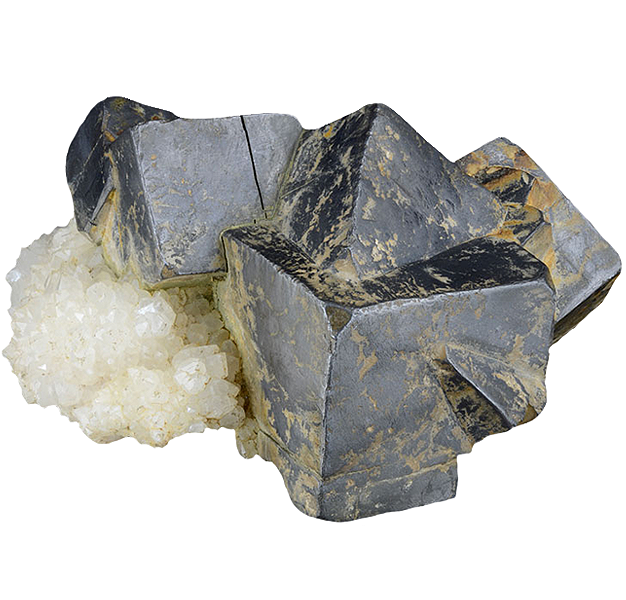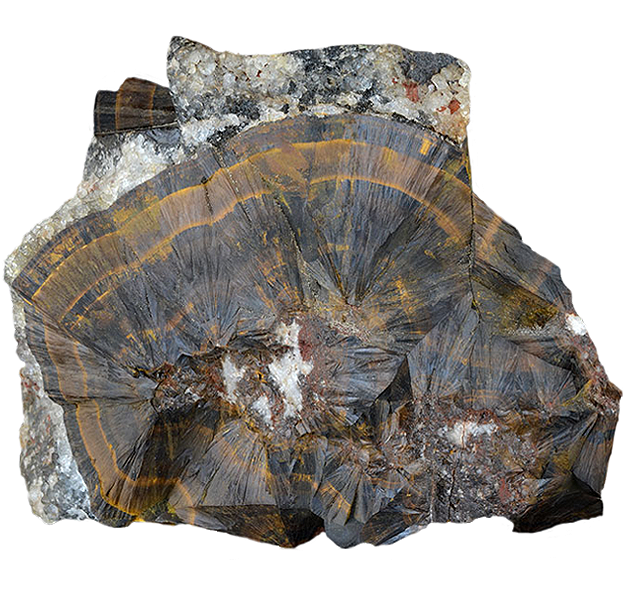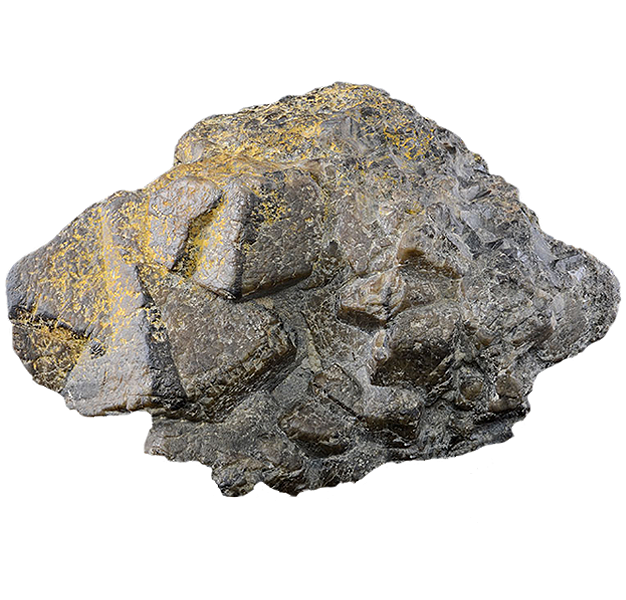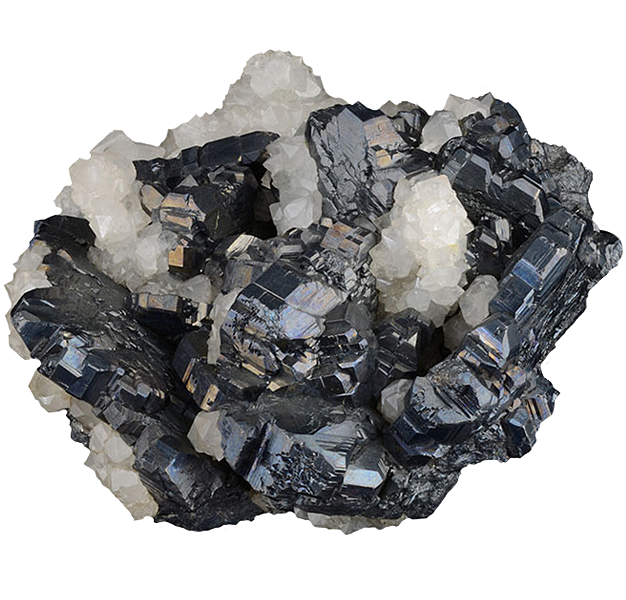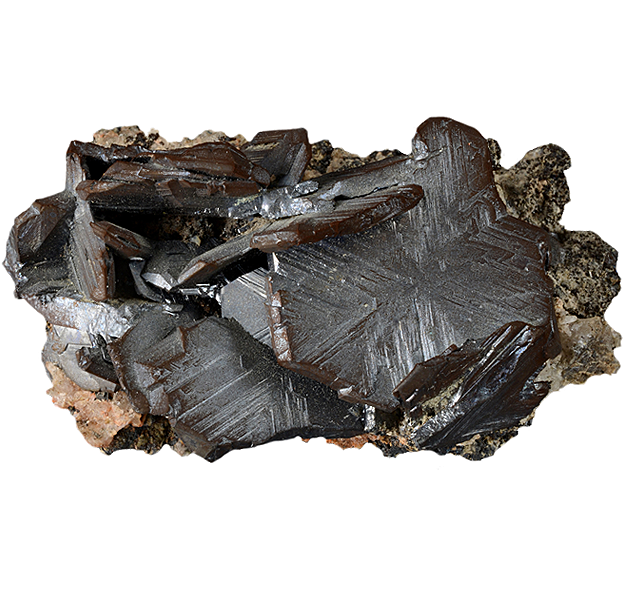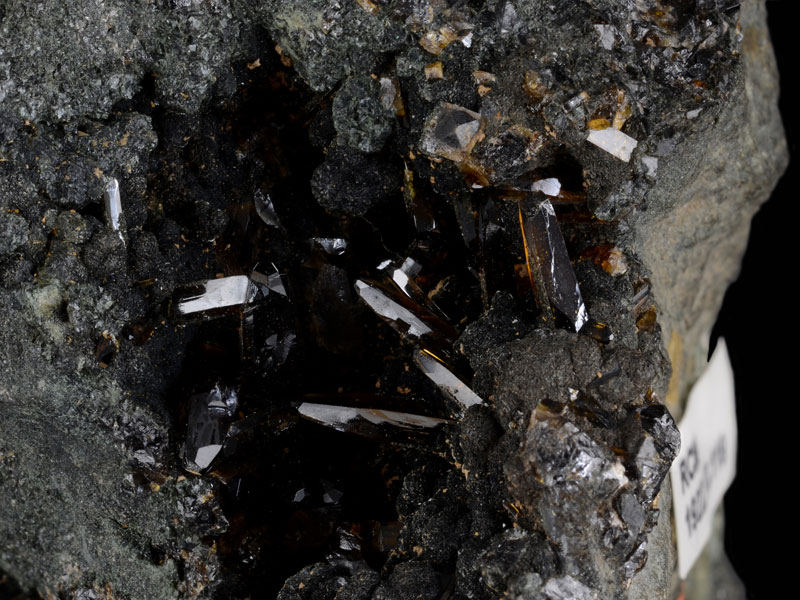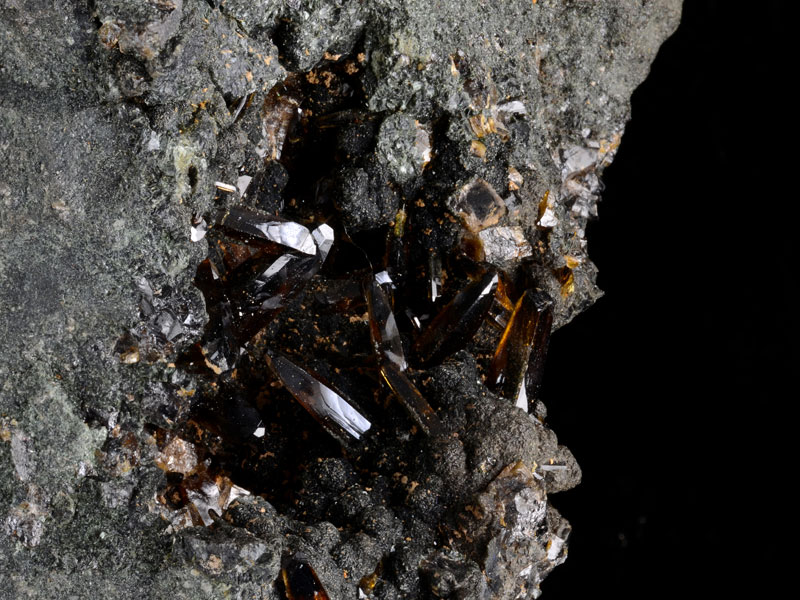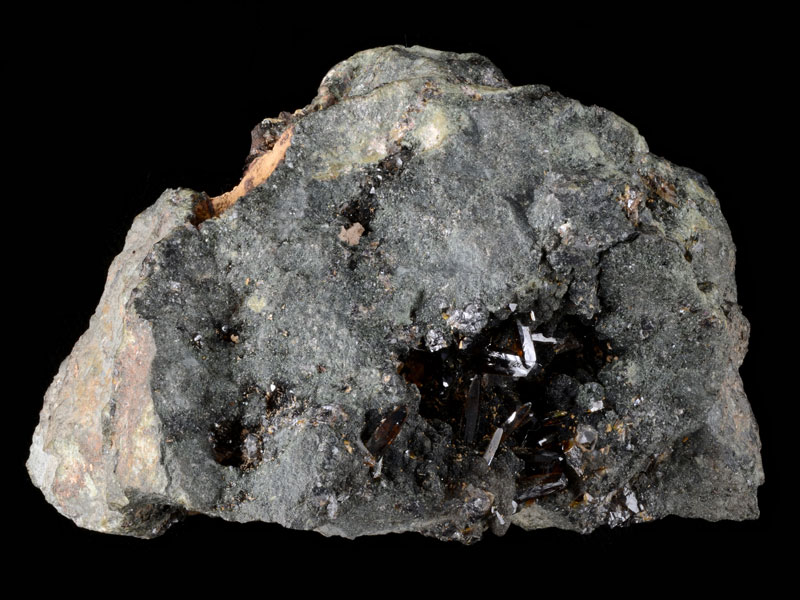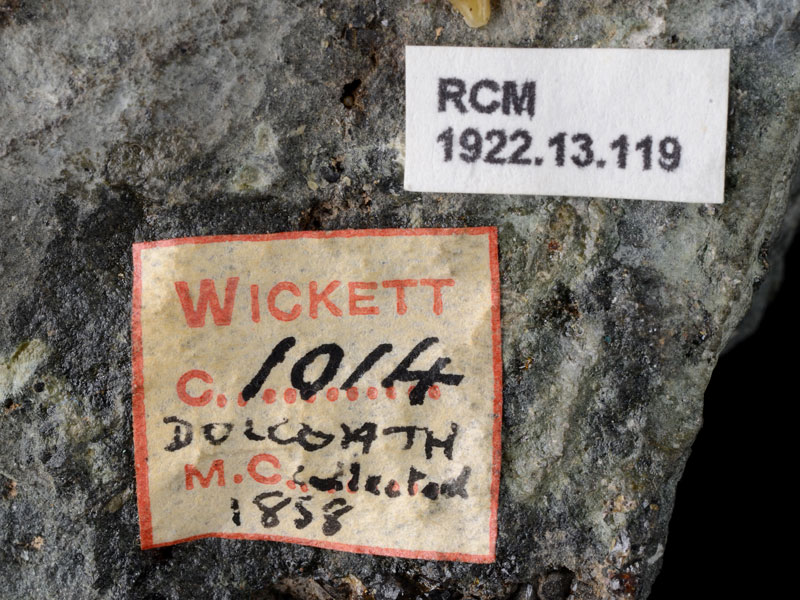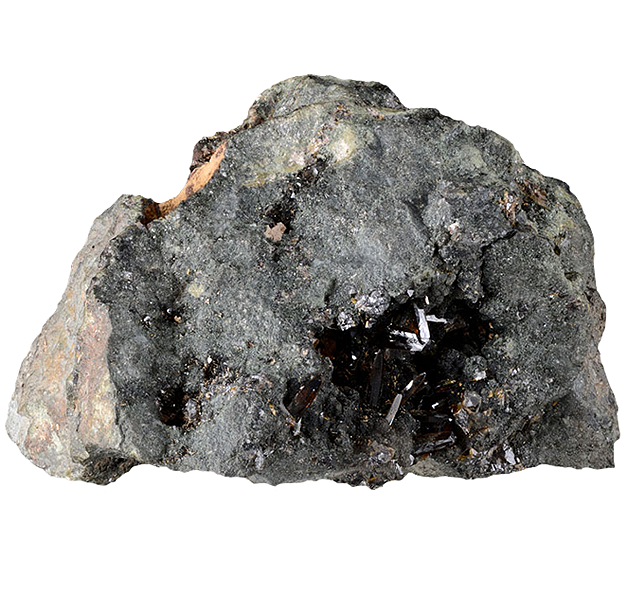
Fact sheet
Cassiterite is the major ore of tin, which is the most important metal sourced in Cornwall. It is found in veins associated with granite. The elongate, pointed prismatic crystals of this specimen are called sparable crystals from their resemblance to sparrows’ bills and also recall the headless nails used in the soles of miners’ boots. This specimen came from Dolcoath in 1858.
Dolcoath’s early life was as a copper mine, but by 1832 it was becoming unprofitable. However, the mine captain, Charles Thomas, was convinced that rich tin ore could be found in a zone below that being worked for copper. He persuaded a new group of shareholders to invest in the tin potential of Dolcoath. The venture paid off and rich tin was encountered at depth. Dolcoath returned its first profit as a tin mine in 1853 and became the deepest mine in Britain. It operated until 1921.
Chemical Formula: SnO2
Specimen no. TRURI: 1922.13.119
Location: Dolcoath mine
Grid Reference: SW 662 405
Mindat http://www.mindat.org/min-917.html
This Collection focuses on Cornwall and West Devon’s mineralogical and mining heritage. The specimens it features are drawn from the collection of the Royal Institution of Cornwall (RIC) held at the Royal Cornwall Museum (RCM).
This collaborative project involving the RCM, the Cornish Mining World Heritage Site and The Open University explores how access to the RIC’s mineral collection and the stories it can tell can be widened using digital technology. It includes radioactive minerals from Cornwall that would otherwise be inaccessible to the public for health and safety reasons.
Sample details
More from this collection
